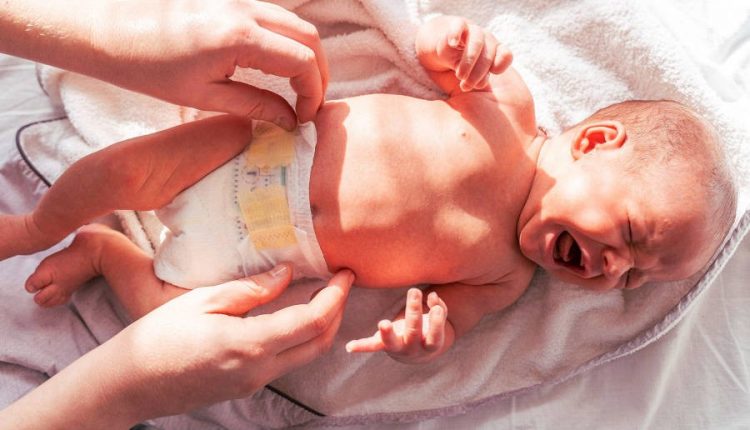
Symptoms and causes of cryptorchidism
Cryptorchidism, or retained testicle, is the most common male genital defect and one of the most common problems in paediatrics
In most situations it resolves spontaneously within the first 2 years of life and, in only a small percentage, surgery is required.
Monolateral or bilateral cryptorchidism
Cryptorchidism is defined as the failure of one or both testicles to descend into the scrotal bursa, i.e. the skin sac containing the testicles, located in the space delimited by the root of the thighs, between the perineum and the pubis.
In the first case, which occurs in 85% of cases, we speak of unilateral cryptorchidism; in the second, i.e. the remaining 15% of cases, of bilateral cryptorchidism.
CHILD HEALTH: LEARN MORE ABOUT MEDICHILD BY VISITING THE BOOTH AT EMERGENCY EXPO
Normally, before birth, the testicle descends from the abdominal cavity, through the inguinal canal, to the scrotum, where the testicles then develop and where there is a lower temperature than in the abdomen, ideal conditions for the maturation of spermatozoa.
In the case of cryptorchidism, on the other hand, the migration of the testicle from the abdominal cavity to the scrotum stops and this can happen at any level and at any time during this ‘journey’.
A ‘silent’ problem at first
Cryptorchidism, in most cases, does not cause any particular problems and does not show any signs of itself.
Only rarely do complaints such as pain, fever, discomfort and a sense of bulging groin occur.
The causes and risk factors of cryptorchidism
The causes and risk factors that can lead to the appearance of cryptorchidism are many and can be distinguished in:
- hormonal deficiency;
- mechanical: obstruction of the testicular migration pathway from the abdominal cavity to the scrotum due, for example, to a closed inguinal canal, testicular blood vessels that are too short or the vas deferens that is too short;
- genetic: rarer.
Premature birth, low birth weight, pollution, smoking and alcohol during pregnancy are also considered risk factors.
How it is diagnosed
The diagnosis, which is essentially clinical, takes place during the paediatric examination.
If cryptorchidism is present, the scrotal bursa is uninhabited, i.e. lacking one or more testicles.
It will be the paediatrician’s task at that point to distinguish cryptorchidism from other pathologies, such as anorchia (lack of testicles) and ectopia (testicle positioned in a different location from the migration route).
Once the abnormality has been detected, it is possible to investigate further by means of certain examinations that allow the position of the testicles to be identified:
- ultrasound;
- magnetic resonance imaging;
- exploratory laparoscopic surgery, in the case of testicles retained in the abdominal cavity.
The consequences of cryptorchidism in adulthood
Cryptorchidism should never be underestimated or neglected.
If not treated within the recommended timeframe, it can in fact cause
- improper functioning of the testicles
- failure of the seminal tissue to develop;
- progressive atrophy of the testicle;
- poor or absent production of spermatozoa;
- low production of hormones (hypogonadism);
- possible formation, albeit rare, of an abnormal and/or tumour mass in the testicles.
Surgical therapy: when to operate
In most cases of retained testicles, no therapy is necessary, as the testicles naturally move into the scrotum during the first months of life.
In about 75% of children with unilateral cryptorchidism, the retained testicle tends to descend spontaneously into the scrotum by the age of 2 years.
If, however, the testicle does not descend spontaneously within the first year of life, a paediatrician must be consulted so that the cryptorchidism can be treated and corrected, again within the age of 2 years.
The ideal treatment for cryptorchidism is surgical (orchidopexy) and aims to return and fix the retained testicle in its natural location (scrotal bursa).
The operation is performed by making a small incision that is closed with resorbable stitches.
Discharge normally takes place the same day.
It is important to emphasise that acting early not only has advantages from the point of view of future complications, but also makes surgery easier due to the anatomy of the child in this age group.
Read Also:
Emergency Live Even More…Live: Download The New Free App Of Your Newspaper For IOS And Android
Varicocele: What Is It And What Are The Symptoms?
Male Pathologies: What Is Varicocele And How To Treat It
Pelvic Varicocele: What It Is And How To Recognise The Symptoms
What Is Varicocele And How Is It Treated?
Varicocele: Symptoms And Treatment



